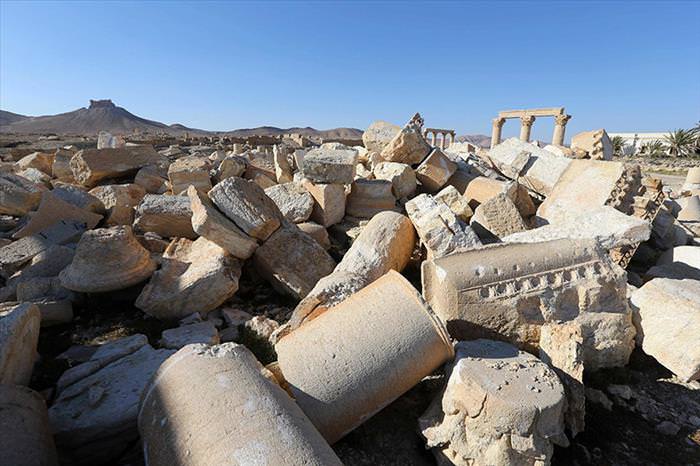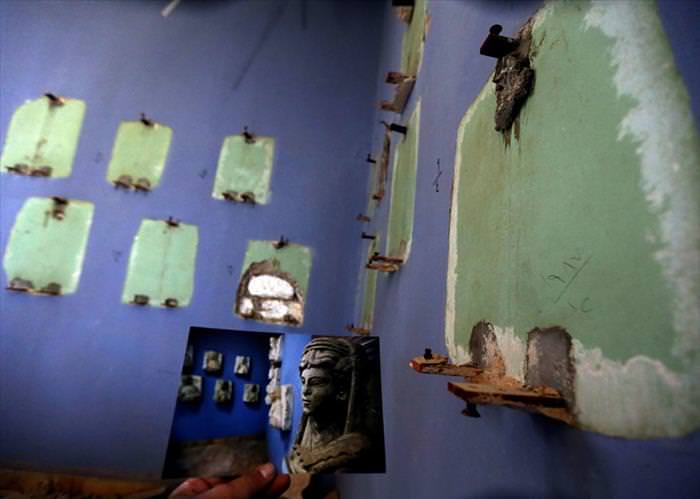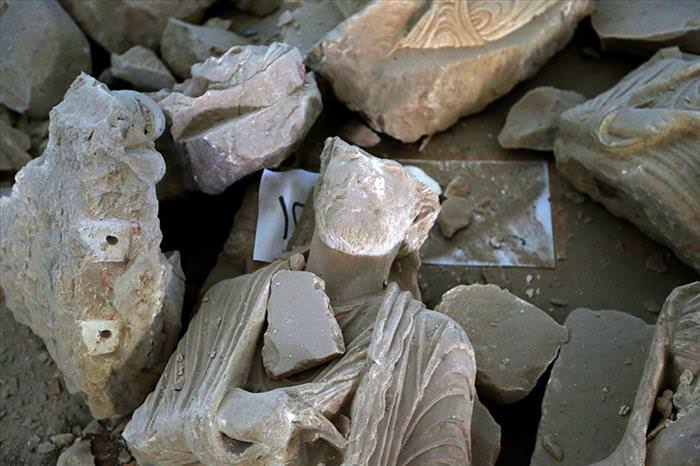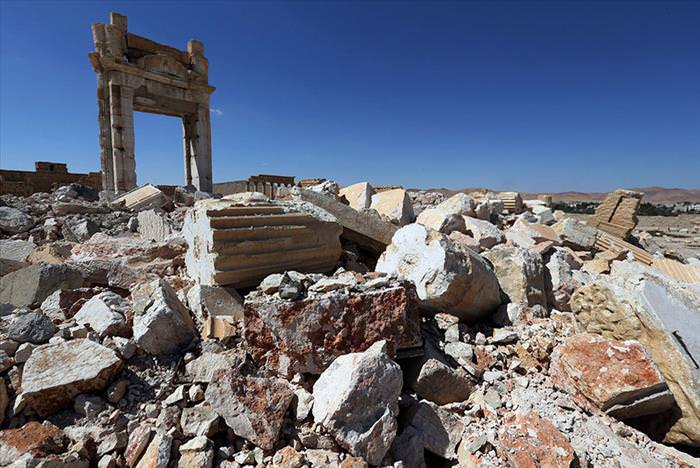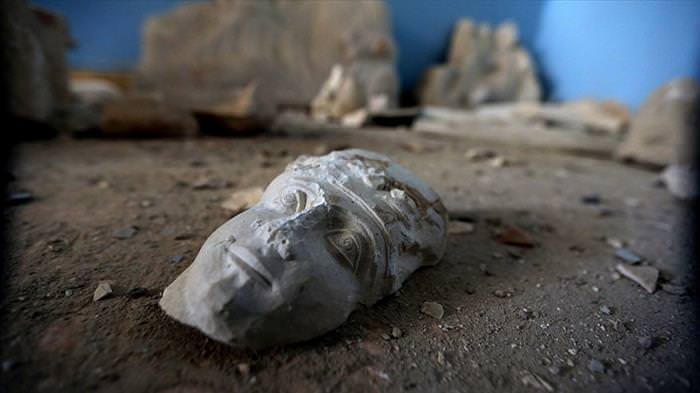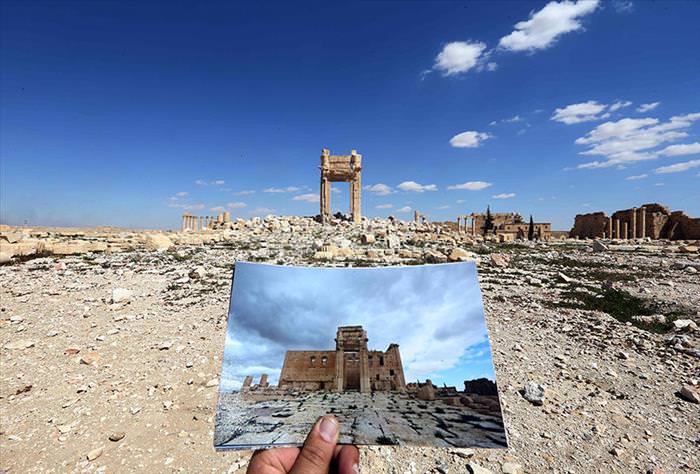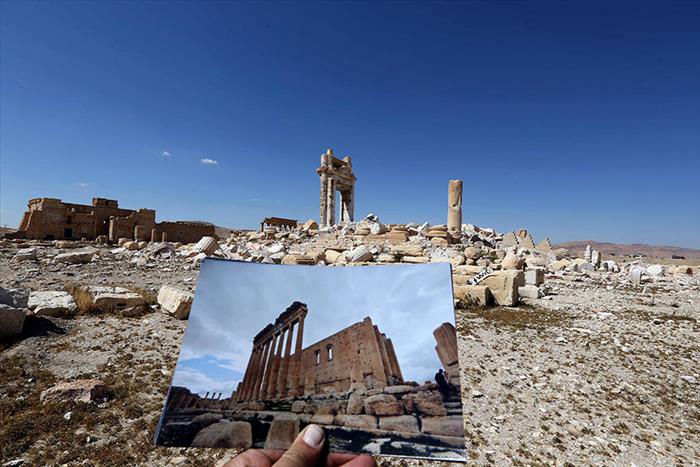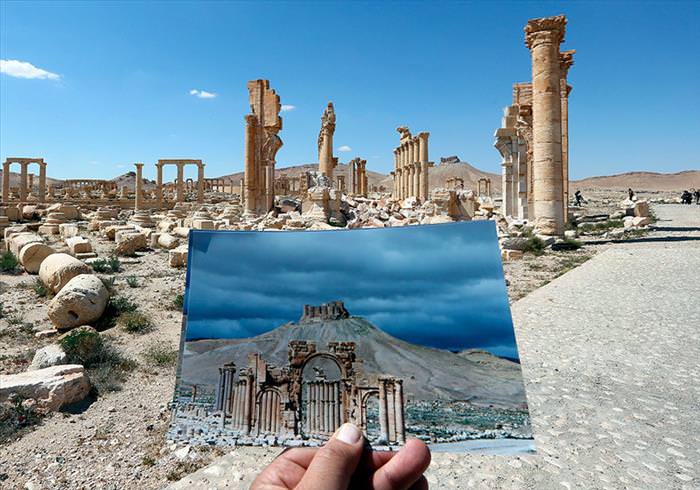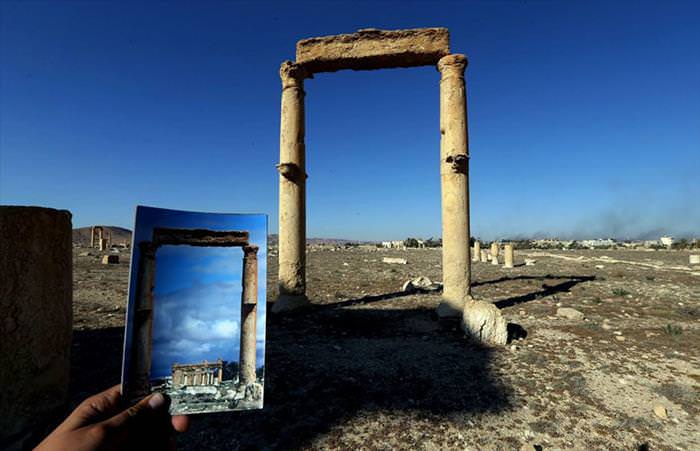
The Temple of Bel's inner chamber, or cella, in ruins. In classical architecture, a cella is where a cult image or statue of the temple's deity would have been kept.
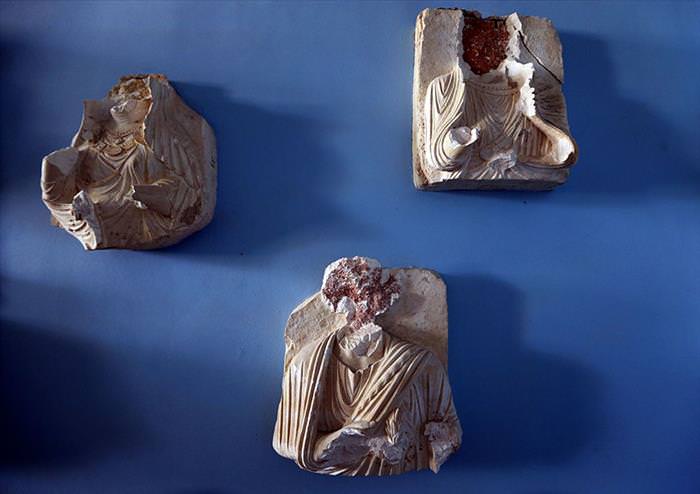
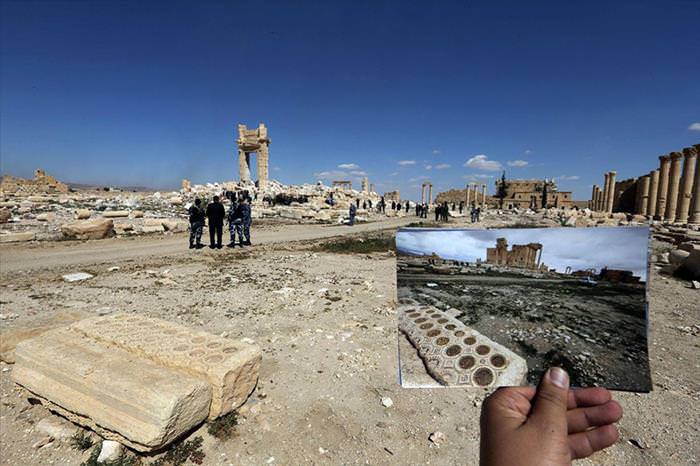

Here’s Why 10 Million People Visit South India Annually
Kerala is one of India’s many hidden gems, a state filled with cultured cities, hill stations, farms, boat rides and a plethora of wildlife

These Archaeological Finds Left the World Mystified
Find out more about the most mysterious discoveries that archaeologists made.
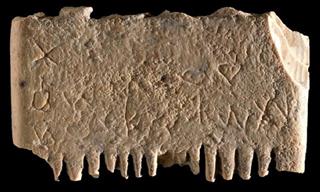
12 Mind-Blowing Archaeological Discoveries Of 2022
Archaeologists made some remarkable discoveries in 2022. Here is a look at the most fascinating ones.
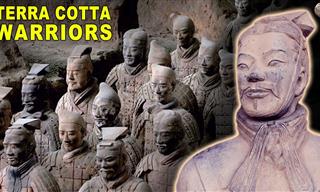 11:02
11:02
The Incredible History of China's Terracotta Army
China's first emperor, Qin Shi Huang Di, had built a platoon of clay soldiers to accompany him in the afterlife. Find out more about this unusual piece of history.

7 Invaluable Secrets to Ensure Your Longevity
There's a whole range of lifestyle books, and arguably even more so-called lifestyle gurus, but these 7 longevity tips backed up by science are all you need.

Say These 10 Words of Positivity Every Single Day...
If you say these 10 uplifting words every single day, you'll immediately start seeing life more positively than ever before. Then you'll know what a gift it is.

A 'Brain Fog' Epidemic? Study Shows a Worrying Trend
Analysis of over 4.5 million U.S. survey responses spanning a decade (2013–2023) shows a rise from 5.3% to 7.4% in reported cognitive disability nationwide, with an exceptional surge in the 18–39 age group and a clear influence of income and educatio

Mysteries From Ancient History Science Still Can’t Explain
From buried treasures to undeciphered languages, this list contains 8 perplexing ancient mysteries.

These Handy Charts Offer All Sorts of Practical Knowledge!
These charts have a lot of practical info, like how to make a wind-proof fire, or how the color of a specific fruit can tell you which antioxidants it contains.

So Long, Pope Francis: The Story of a Beloved Pope
Let's have a look at the remarkable life and legacy of Pope Francis, exploring the experiences and values that have shaped his papacy and inspired a global community.

Time Changes Everything... As Seen in These Photos
These incredible photos show just how powerful time is.

You’ll Love Learning Of These Surprising Facts!
We assure you - these 14 facts are as entertaining and as they are unbelievable!
 26:11
26:11
Watch This Man Trying Five Star Hotels... For DOGS
re these doggie hotels worth the price? Watch the video to find out.

15 Super-Interesting Facts that Will Surprise You
These surprising historical facts will supply a meaty meal for anecdote and history lovers alike. It's so much fun to learn those small details about days gone by.

9 Highly Praised Comedies from 2020-2025
Here is a look at nine highly praised comedies released between 2020 and 2025 that have defined the decade so far.

These Mysterious Cases of Exorcism Are Infamous...
History is full of demon possession and ecorcism stories, which will make your spine crawl. Here are three such mysterious cases.

INTERACTIVE: Click on the Old Photos to Bring Them Alive
Although we imagine the world prior the 1950s in terms of black and white, new colorization techniques have changed everything. Enjoy this interactive post.

These Beauty Practices of the Past Look Strange Today…
17 fascinating photos of beauty procedures, treatments, and practices from the first half of the 20th century that look strange and curious today

The Streets of Rome: 15 Illustrations of Daily Life
Here are 15 artistic depictions that offer a glimpse into what life was like in ancient Rome.

The Mongol Empire: Rise, Expansion, and Legacy
What follows is a narrative overview of the Mongol Empire – from its tribal origins and unification under Genghis Khan, to its gradual decline and lasting impact on world history.

The 12 Moonwalkers: The Men Who Touched The Lunar Surface
Here's a look at the only 12 men in history to have walked on the surface of the moon.

12 Bizarre Events You Won’t Believe Actually Happened
Check out these 12 unbelievable facts that will leave you amazed.

14 Mind-Blowing Optical Illusions You Must See
After trying to wrap your head around these crazy visual challenges, your eyes will be tired but your mind will be thrilled and elated!

16 Delightful Hidden Details Found in Everyday Objects
Sometimes, when taking a closer look, seemingly-ordinary objects may reveal cool little hidden details, as these photos prove.
 4:13
4:13
This is What Happened to the Man Who Didn't Salute Hitler!
Nearly eight decades have passed since a camera captured the moment a man refused to give Hitler a Nazi salute. Here's what happened to him.
 19:11
19:11
18 Things You Probably Didn't Know About Medieval Times
Watch Medieval Literature Dr. Dorsey Armstrong answer all the important questions related to the Middle Ages.

Just Wanted to Say: HAPPY HALLOWEEN!!!
Halloween is the time for ghouls, witches and strange bumps in the night. Share some of your holiday excitement by sending these video greetings to a loved one!

These Photos Prove How Weird Our World Has Always Been
These strange yet intriguing photos depict what our world has gone through in its history.
 4:56
4:56
WATCH: These Soldiers Can Sing as Well as They Serve
These soldiers aren't just trained for service—they've mastered harmonies that hit you right in the heart.

These Facts Are Some of the Most Interesting You'll Read
Have a read through these intriguing worldly facts.

Can You Guess the Meaning of These 20 Common Surnames?
We kind of take surnames for granted, as they are just passed down to us. But every name has an origin and meaning, and some might surprise you.

10 Popular “Contemporary” Words Coined by Shakespeare
Shakespeare’s impact on the language we speak is far greater than most of us realize. These surprising words are just a few of hundreds attributed to the Bard.

How 10 Ordinary English Idioms and Phrases Began...
Many English phrases and idioms have fascinating histories behind them, here is a selection of 10 astounding examples.

These Optical Illusions Will Leave Your Brain Befuddled
The optical illusions you're about to see are all completely static. In spite of that, they all appear to be moving. Can you figure out what's going on?

15 Illuminating Quotes to Remember When You Overthink
The next time you feel like you are slipping into an overthinking spree, remember these illuminating quotes.
 18:31
18:31
The Most Beautiful Asian Royal Crowns
This video will show you 10 famous crowns from Asia and their fascinating histories.

This Could’ve Been the Worst Nuclear Catastrophe in the US
In 1961, the US avoided a major nuclear disaster thanks to sheer luck...

The World Is Full of Interesting Curiosities, Take a Look
This collection of photos illustrates some surprises you've likely never seen before.

How About Learning Some Fun SLANG From Colonial Times?
Here are 14 fascinating words from Colonial times that sadly didn’t survive until the present days, but we certainly think they’re worth bringing back!
 7:04
7:04
48 Names For Things You Never Knew Had Any
Watch this fascinating video that will reveal to you some words you'll never hear spoken and yet describe things you see every day!
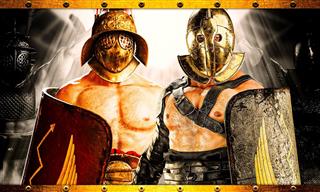 29:45
29:45
Ancient Rome Had Different Kinds of Gladiators...
There’s much we don’t know about these amazing fighters and this documentary sheds some in-depth light on every known type of gladiator from Ancient Rome.

15 Common Words You Are Pronouncing WRONG
Here is a list of some of the most common English words that are generally mispronounced by a majority of us.

You Won't Believe These Stories of the White House
The White House stands as a glorious monument to American politics, and in its 200 years of history, has had quite a few interesting encounter!

14 Movie Recommendations You Won’t Want to Miss
Which films deserve to be added to your watch list? Here are 14 suggestions (with trailers) that are sure to inspire and emote you.

12 Beautiful Facts About the Charming Act of Kissing
Such interesting facts about the act of kissing...
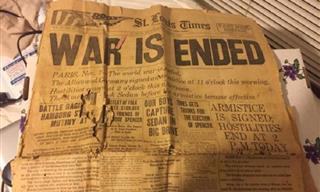
15 Amazing Items of the Past People Found in Their Homes
The nooks and crannies of our homes may contain some really fascinating vintage items...

20 Cognitive Biases Ruining Our Decision Making Process
If you find it hard to make a decision, these cognitive stumbling blocks could be what's affecting your behavior.
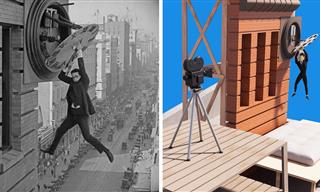 6:56
6:56
The Fascinating Tricks Behind 1920 Movie Stunts
Prepare to be amazed by the masters of 1920s movie magic.
To enable your Ad-Free Subscription, please fill the fields below
Your subscription was successful, now you can enjoy an ad-free experience!! Note: To make sure you get no ads, please make sure to log in to your account. If you are logged in already, then refresh the page. The subscription can be cancelled at any time.



